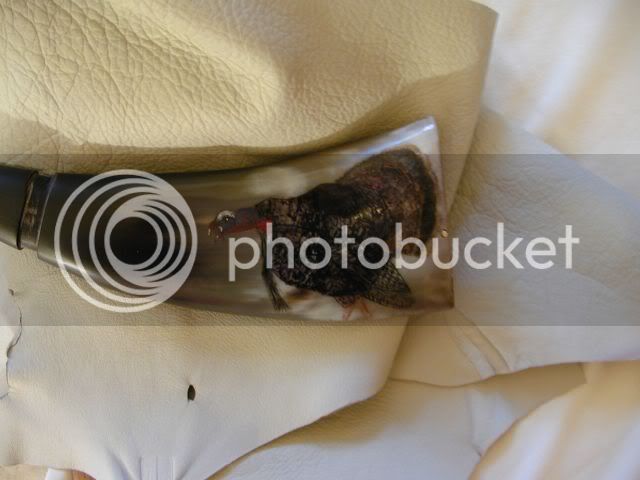Howdy,
Built and scrimshawed my first with a lot of of info from this site. There is a lot of knowledge here!
After doing some reading and whatnot, I filed the horn smooth with a fairly agressive file and then sanded and sanded staring with 100 grit and progressing to 400. looked real good. I squared the large end and made a plug by tracing the base onto a piece of mohogany that is 3/4", set a jigsaw to 10 degree and cut it out. sanded inside to remove bumps, checked fit and figured out how to arrange my brass tacks. Drilled base with tiny bit to eliminate cracks, epoxied and put her on.
Do lots of research on how to drill the pour end!
Made a plug resembling a violin tuning peg.
I sprayed the horn with KRYLON clear, artist's grade and transfered my drawings using carbon paper. etched using a fine awl (found that my napa auto parts little blue bodied 12volt power checker worked real good) and etched away!
I then wiped the etchings with black india ink and removed the balance with a clean rag, leaving only ink in the etching. this step with the krylon worked well.
I was then left with the option of having a very shiny horn or dull it up with 4-0000 steel wool, which I did.
Results were very pleasing to me, better than lots I have seen!
as far as the base cap,I left the horn in its natural shape, since I knew the history of the animal it came from!
worked for me, lots of other methods and ideas out there!
Brett







